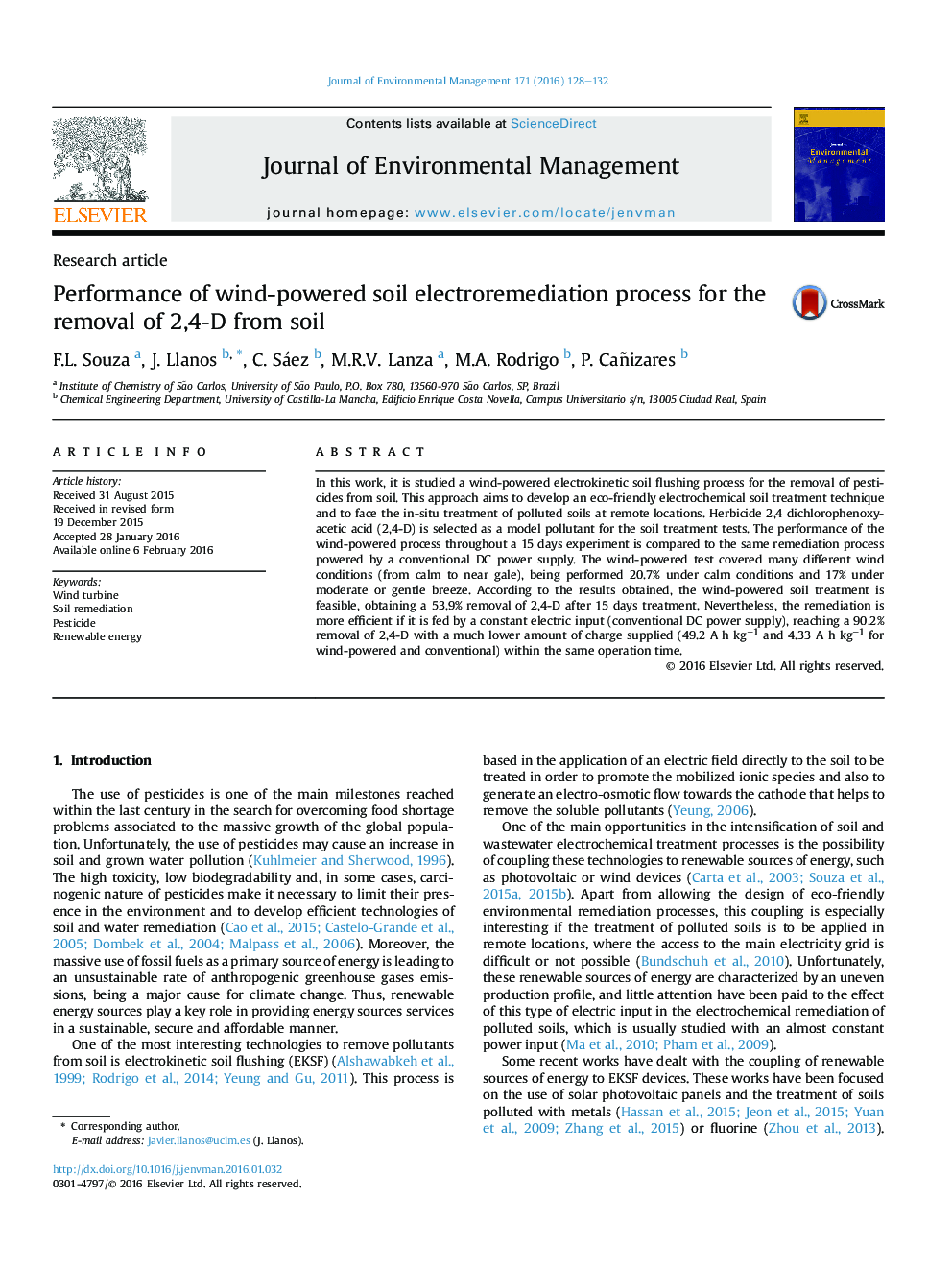| Article ID | Journal | Published Year | Pages | File Type |
|---|---|---|---|---|
| 1055305 | Journal of Environmental Management | 2016 | 5 Pages |
•15 days wind-powered electrokinetic soil flushing tests are performed.•Wind-powered process is compared with a constant electric input.•Wind-powered test covered from calm to near gale wind conditions.•Remediation is more efficient if fed by a conventional DC power supply.
In this work, it is studied a wind-powered electrokinetic soil flushing process for the removal of pesticides from soil. This approach aims to develop an eco-friendly electrochemical soil treatment technique and to face the in-situ treatment of polluted soils at remote locations. Herbicide 2,4 dichlorophenoxyacetic acid (2,4-D) is selected as a model pollutant for the soil treatment tests. The performance of the wind-powered process throughout a 15 days experiment is compared to the same remediation process powered by a conventional DC power supply. The wind-powered test covered many different wind conditions (from calm to near gale), being performed 20.7% under calm conditions and 17% under moderate or gentle breeze. According to the results obtained, the wind-powered soil treatment is feasible, obtaining a 53.9% removal of 2,4-D after 15 days treatment. Nevertheless, the remediation is more efficient if it is fed by a constant electric input (conventional DC power supply), reaching a 90.2% removal of 2,4-D with a much lower amount of charge supplied (49.2 A h kg−1 and 4.33 A h kg−1 for wind-powered and conventional) within the same operation time.
Graphical abstractFigure optionsDownload full-size imageDownload as PowerPoint slide
